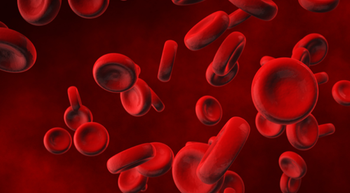
How Nurses Can Assess and Manage Talquetamab Toxicities
Nurse practitioner Beth Faiman outlines nursing strategies to monitor, assess, and manage toxicities associated with talquetamab in multiple myeloma.
Monitoring for cytokine release syndrome, neurotoxicity, and managing dermatologic and oral toxicities are key strategies for supporting patients on talquetamab (Talvey), according to Beth Faiman, PhD, MSN, APN-BC, BMTCN, AOCN, FAAN, FAPO.
In an interview with Oncology Nursing News following
She explained that patients are often admitted during step-up dosing to monitor for early
Beyond acute effects, she highlighted dermatologic and oral toxicities tied to GPRC5D expression on keratinized and oral cells. Supportive measures may include moisturizers, antihistamines, topical steroids, nail care, antifungals, and oral rinses. Dose adjustments or modified schedules may be considered to balance disease control with tolerability and keep patients on therapy.
Transcript
Talquetamab is FDA approved for multiple myeloma after 4 prior lines of therapy. It’s a bispecific antibody that takes the CD3 and, like a helping hand, binds to a GPRC5D receptor and then causes cell death, cytokine release, etc.
With talquetamab, like most of our bispecific antibodies, patients are often admitted to the hospital. On day 1, they’re given a tiny, baby dose, watched for 48 hours to make sure they don’t have this cytokine release syndrome or neurotoxicity, such as ICANS. There’s a neurotoxicity tool that we administer, asking the patient to count backwards from 10 and then from 100, do handwriting samples, make sure they’re not confused or having headaches. Then the third thing is the infection: short-term, during the step-up phase of talquetamab, that’s what you see.
Unfortunately, even in the first week, a rare and unique toxicity, is dermatologic adverse events in patients with talquetamab. GPRC5D is a receptor that is expressed on keratinized cells, such as your skin and oral cells, so during my presentation, I described some of the things that you can do.
Dry skin is common in the first month, so we recommend heavy moisturizers such as ammonium lactate at 12%, especially to the hands and feet, because you can get a hand and feet rash. You can get some nail thinning and peeling. People will walk into my office with bandages around their nails because the nails are peeling off, so I recommend nail hardeners, some topical vitamin E oil, and triamcinolone at 0.025%.
Sometimes you can get itchy skin, especially in the first month. That’s where we recommend non-sedating antihistamines, such as loratadine and then the topical triamcinolone at 0.1%. Sometimes you can get a more severe, maybe grade 3 rash, where it’s itchy, peeling skin, and you might need a steroid taper, such as methylprednisolone, but fortunately, I don’t see a lot of that. It tends to be more of a mild rash.
These skin toxicities will go away faster than the oral toxicity. The oral toxicity that’s seen starts about 2 to 4 or more weeks in my experience, and according to the clinical trials where people will get taste changes, dry mouth, sometimes trouble swallowing. It’s important to look in your mouth.
If you’re a nurse seeing these patients, you want to look in their mouth and make sure they don’t have any thrush because we’re not always putting people on antifungal medications. Sometimes we’ll recommend oral nystatin. It depends on the hospital. Sometimes they just have thrush and they need a little bit of antifungal, but we do recommend an oral solution with dexamethasone.
Again, there’s been a lot of research. Donna Catamero, NP, who is a colleague of mine, and
Unfortunately, the oral toxicity doesn’t go away quickly. What I recommend is giving talquetamab every other week. If by month 2 or so, it’s bothersome to the patients, I say, “Listen, your myeloma is already responding to this drug. Let’s just skip this dose. See how your myeloma numbers are.” Then by month 3, especially, sometimes we’re going down to talquetamab once monthly.
We’re balancing the disease control and with the adverse effects to keep patients adhering to the treatments. Drugs don’t work if people don’t take them, and we’re trying to keep them on the treatment as long as we can at the dose that works for them.
This transcript has been edited for clarity and conciseness.
Newsletter
Knowledge is power. Don’t miss the most recent breakthroughs in cancer care.






























































































